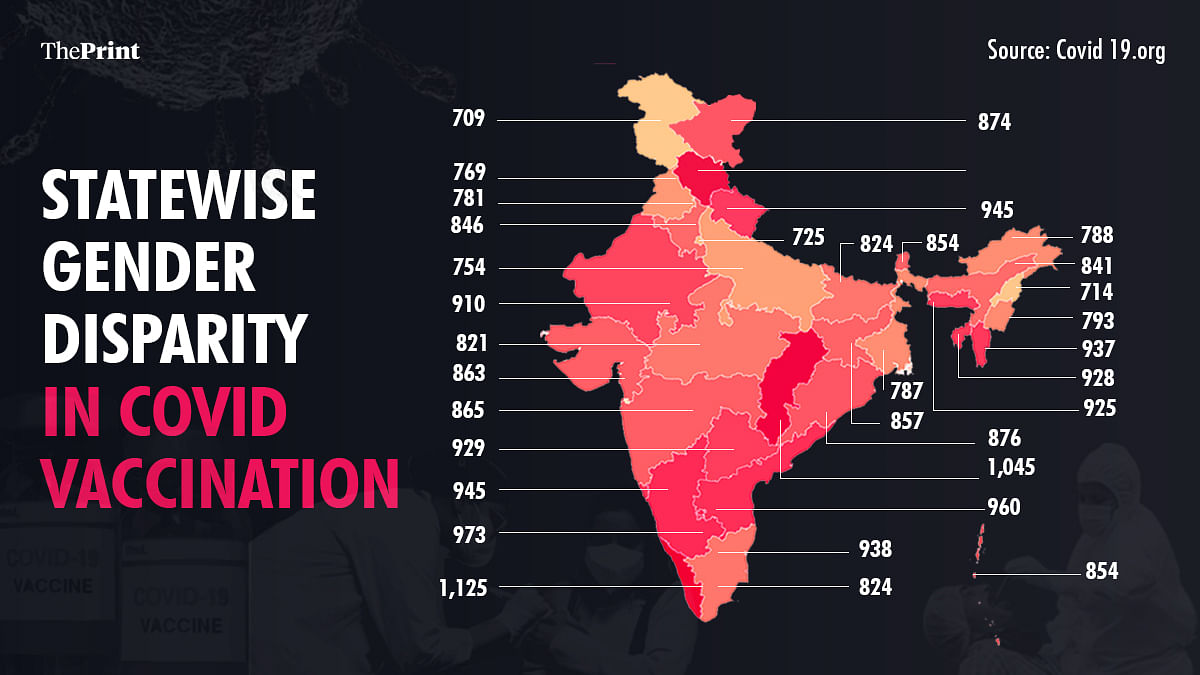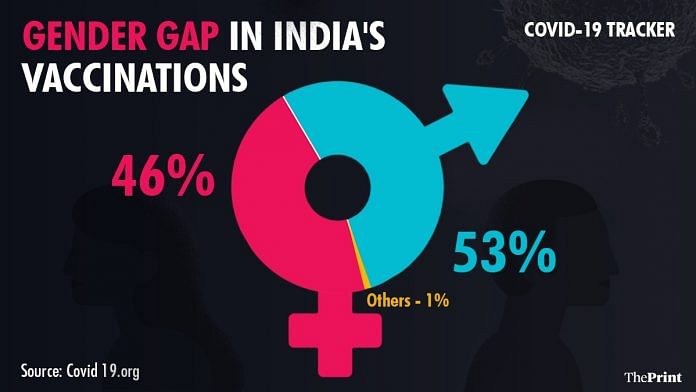New Delhi: India started its Covid vaccination drive on 16 January, and as of June 2, 21,85,46,667 doses of Covid vaccines have been administered in the country. This includes both the first and second doses. However, a look at the numbers shows that most Indian states are vaccinating more men than women.
So far, the number of men vaccinated with at least one dose is 15 percent higher than the number of women who have been inoculated.
This means that for every 1,000 men being vaccinated, only 867 women were vaccinated. This ratio is lower than India’s already skewed sex ratio.
According to the 2011 census, the population ratio in India is 940 females to 1,000 males. According to Niti Aayog, the ratio is far worse at 900 females per 1,000 males — as of 2015.
As of 2 June, the number of men vaccinated stands at 9,13,81,749, while 7,92,31,870 women have been inoculated with at least one dose. This means of the total population vaccinated so far, 53 per cent are men.
Chhattisgarh, Kerala, HP best performers
Chhattisgarh, Kerala, and Himachal Pradesh are the only three states where the percentage of women being vaccinated is higher than that of men.
Kerala, the state which has the highest sex ratio in the country (967 females per 1,000 males), is also the state that has performed the best in ensuring that its female population gets vaccinated.
For every 1,000 men vaccinated in the state, 1,125 women got vaccinated.
Chhattisgarh follows a similar trend. For every 1,000 men vaccinated in the state, 1,045 women have received the shot.
In Himachal Pradesh, 1,003 women have been vaccinated against every 1,000 men.

Gender gap in Delhi, UP, J&K, Punjab
Meanwhile, Jammu & Kashmir, Nagaland, and Delhi have the highest gender disparity in terms of vaccination.
Jammu & Kashmir, which has been lauded for vaccinating 67 per cent of its 45-plus population, has the highest gender disparity among states.
For every 1,000 men who received the shot in the state, only 709 women have been vaccinated.
This is followed by Nagaland, where for every 1,000 men who received the shots, only 714 women were vaccinated.
Delhi too is among the states with a gender gap in vaccinations. For every 1,000 men, the capital is vaccinating just 725 women. This is far from the reported sex ratio of Delhi — 869 femaled per 1,000 males.
The gender inequality is also visible in Uttar Pradesh and Punjab, where men constitute over 56 per cent of those who have been vaccinated.
In UP, 769 women are vaccinated for 1,000 men who receive the Covid shot, while 754 women are vaccinated in Punjab for every 1,000 men.
States like Karnataka, Andhra Pradesh, Uttarakhand and Goa are some of the other states which are doing well in terms of gender parity. Of the total population vaccinated in these states, around 51 per cent are men.
The number of trans people who have been administered at least one shot of the Covid vaccine is as low as 26,793.
Also read: India’s R value steady at 0.82, but Maharashtra, Kerala see rise in Covid infection rates



